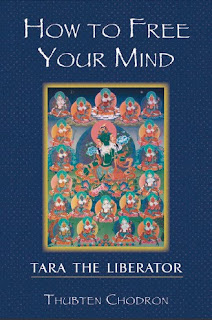
Tara's Enlightened Activity: Commentary on The Praises to the Twenty-one Taras
The female Buddhist deity Tara is an object of devotional worship and meditative practice for Tibetan Buddhists everywhere, both male and female. She clears away fears, overpowers negative emotions, and enables all beings to reach enlightenment. She has special resonance as a source of female spiritual wisdom. Tibetans of all schools and traditions recite the verses on which this commentary is based. Focused, contemplative meditation in relation to the myriad aspects of Tara work to transform the practitioner's mind into those enlightened qualities and mind states that Tara represents.
Sought-after teachers throughout the West for over twenty-five years, Khenchen Palden Sherab Rinpoche and his brother Khenpo Tsewang Dongyal Rinpoche illuminate the practice of The Praises to the Twenty-one Taras with humor and wisdom. The explanations cover progressively more subtle levels, from basic Buddhism through the Inner Tantras and culminate with Dzogchen. Interspersed with lively stories about Tara, the authors explain the physical conditions for practice, the outer and inner meanings of the text itself, and give solutions for problems that may emerge as practice progresses.
SharingMatrix
DepositFiles

































